Heartland Heroes: 17 Iconic College Stadiums in the Midwest
The Midwest, often referred to as the heartland of America, is home to some of the most iconic college stadiums in the country. These hallowed grounds are not just arenas for athletic competition; they are historic landmarks, cultural touchpoints, and embodiments of regional pride. Each stadium holds a unique story, reflecting the traditions, aspirations, and achievements of the institutions they represent. Join us as we explore 17 of the Midwest's most legendary college stadiums, celebrating their history, architectural brilliance, and the indelible impact they have on American sports.
1. Michigan Stadium – Ann Arbor, Michigan
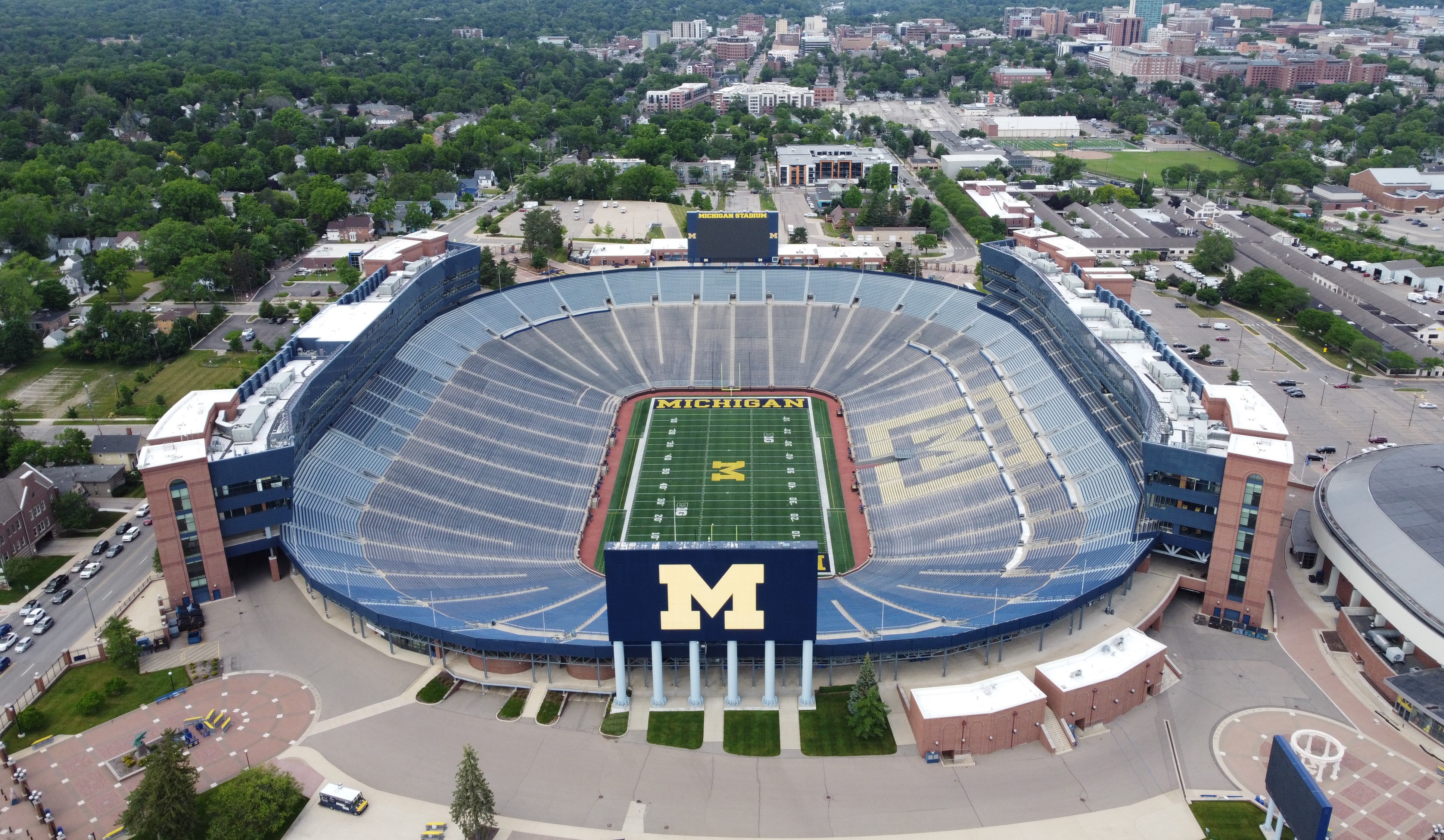
Nicknamed "The Big House," Michigan Stadium is the largest college stadium in the United States, with a capacity exceeding 107,000. Opened in 1927, this legendary venue has hosted countless memorable games and is a testament to Michigan's rich football tradition. Known for its electric atmosphere and passionate fans, the stadium is an essential stop for any college football enthusiast. Its colossal size and iconic maize-and-blue decor make it a cathedral of the sport. But Michigan Stadium is more than just a football venue; it’s a cultural hub for the university and the state of Michigan. On game days, the streets of Ann Arbor are awash in maize and blue, with tailgaters celebrating the Wolverines' storied legacy. The stadium also hosts graduation ceremonies, concerts, and community events, making it a versatile centerpiece for the region. Its rich history and architectural grandeur have cemented its place as a symbol of pride and unity for generations of fans.
2. Ohio Stadium – Columbus, Ohio
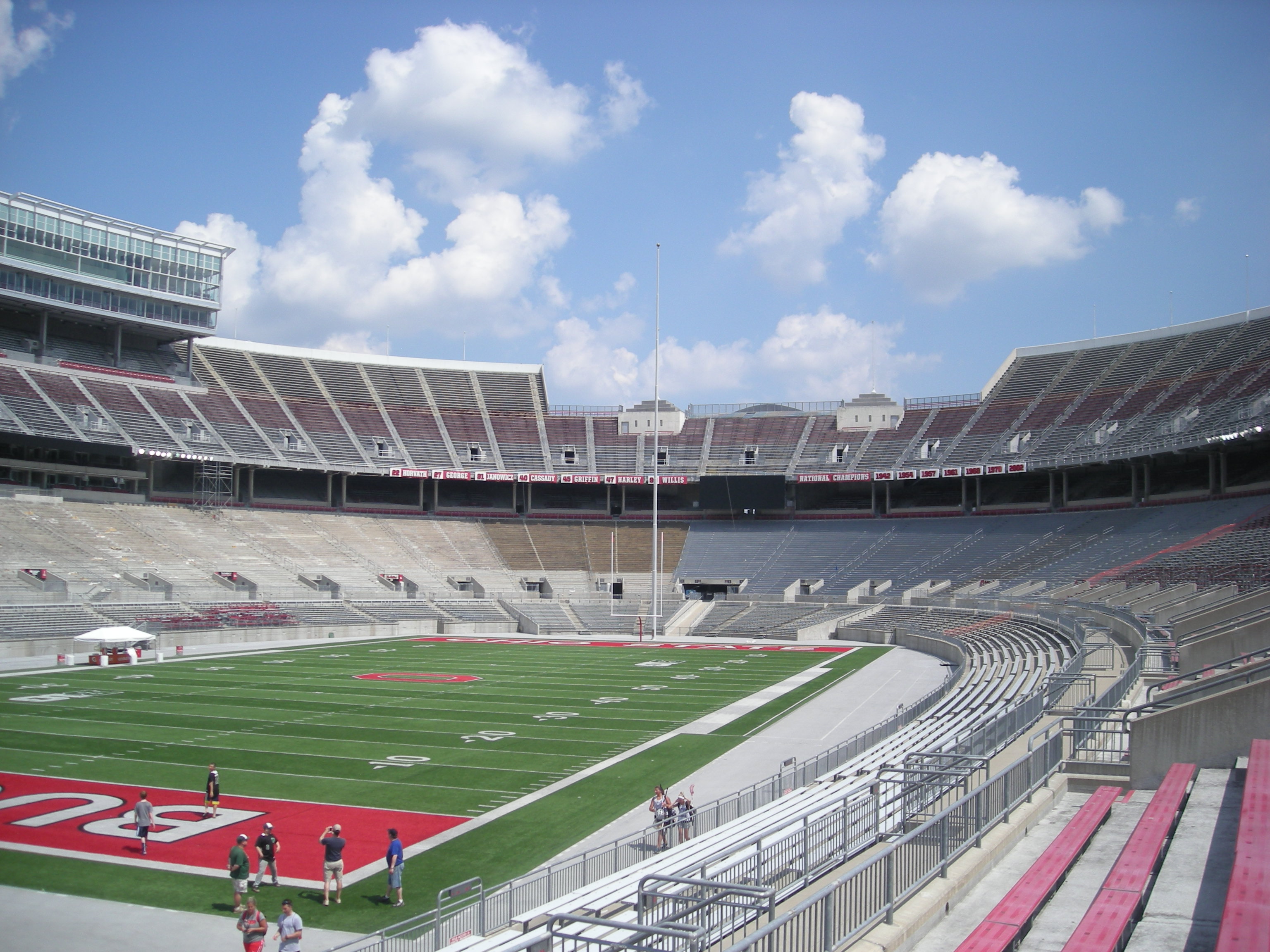
Ohio Stadium, affectionately called "The Horseshoe," is a marvel of collegiate architecture. Opened in 1922, it boasts a seating capacity of over 100,000, making it one of the largest stadiums in the nation. The home of the Ohio State Buckeyes, it is famous for traditions like the "Dotting of the 'i'" and its roaring Scarlet and Gray fanbase. The stadium’s unique horseshoe shape has become an iconic symbol of Ohio State’s football dominance. The energy of Ohio Stadium on game days is unparalleled, with the sounds of the marching band and the chants of thousands of fans echoing through the air. The "O-H-I-O" chant, passed from section to section, exemplifies the unity and passion of Buckeye Nation. Beyond football, the stadium has hosted significant events, including concerts and political rallies. Its storied history and vibrant atmosphere make it a cornerstone of college football and an enduring emblem of Ohio’s sports culture.
3. Memorial Stadium – Lincoln, Nebraska
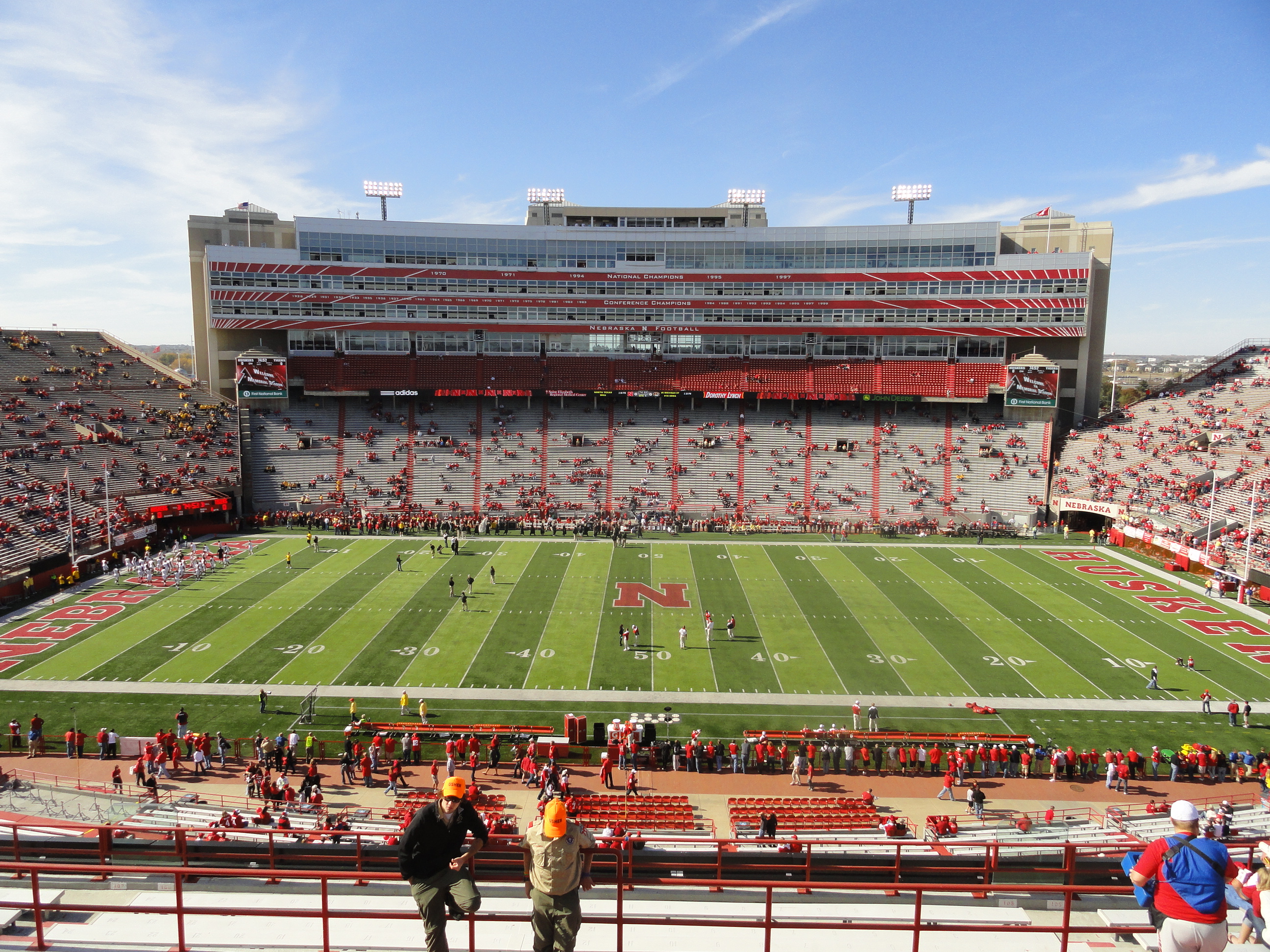
Known as the "Sea of Red," Memorial Stadium in Lincoln is a fortress of Nebraska football pride. Opened in 1923, the stadium is famous for its sellout streak, which dates back to 1962. With a capacity of over 85,000, it becomes a sea of passionate fans clad in red on game days. The stadium’s rich history and unwavering support make it one of the most cherished venues in college sports. Memorial Stadium is a beacon of resilience and community for Nebraskans. The stadium’s "Through These Gates Pass the Greatest Fans in College Football" motto encapsulates the spirit of its dedicated supporters. Game days are marked by an outpouring of tradition, from the Tunnel Walk to the echoing cheers of "Go Big Red." The stadium also symbolizes the deep connection between the university and the state, serving as a gathering place for celebrations and milestones.
4. Camp Randall Stadium – Madison, Wisconsin
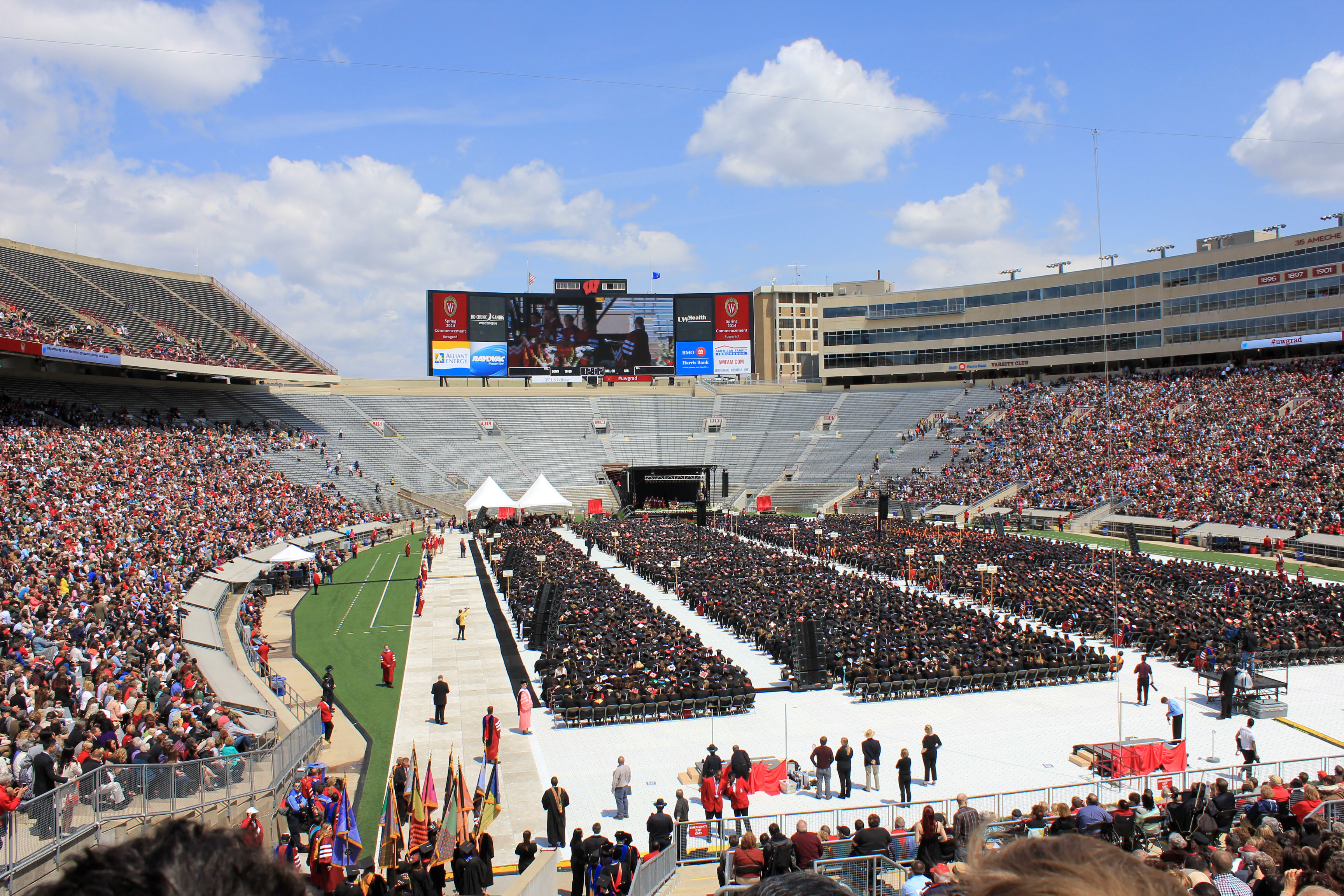
Camp Randall Stadium, situated in Madison, Wisconsin, is steeped in history. Originally a Civil War training ground, it was converted into a football stadium in 1917. With a capacity of 80,321, it is known for its vibrant atmosphere and traditions like the famous "Jump Around" between the third and fourth quarters. The Badgers' loyal fanbase and the stadium’s unique history make it a must-visit venue.Beyond football, Camp Randall is a symbol of community and perseverance. The stadium’s connection to its military past adds a layer of depth to its legacy. On game days, the energy peaks as fans come together to cheer on the Badgers, creating a sense of camaraderie and pride. The "Jump Around" tradition, in particular, has become a nationwide phenomenon, showcasing the spirit and enthusiasm of Wisconsin fans. The stadium’s blend of history and modernity ensures its continued place as a cornerstone of Midwest sports.
5. Notre Dame Stadium – South Bend, Indiana
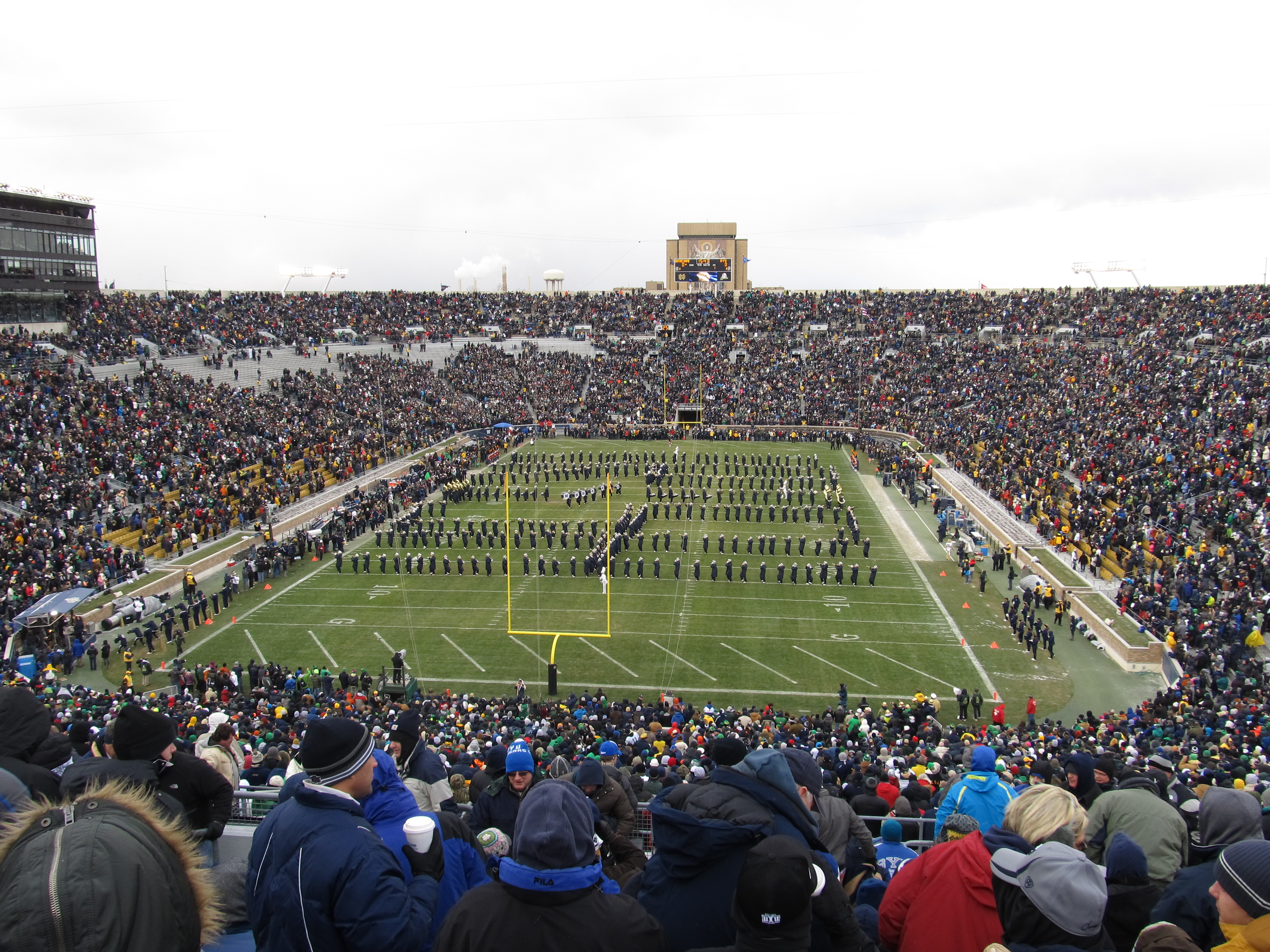
Notre Dame Stadium is synonymous with the Fighting Irish and their storied football legacy. Opened in 1930, it has been the site of countless iconic moments in college football. Known for its classic design and the "Play Like a Champion Today" sign in its tunnel, this stadium is a shrine to tradition and excellence. Its aura is unmatched, drawing fans from across the nation to witness the magic of Notre Dame football. The stadium’s timeless charm and storied past are complemented by its role as a cultural landmark. Notre Dame’s unique traditions, including the marching band and the leprechaun mascot, add to the unforgettable game-day experience. Renovations have modernized the stadium while preserving its historic essence, ensuring it remains a symbol of collegiate excellence. For fans and alumni alike, Notre Dame Stadium represents the pinnacle of college football tradition.
6. Spartan Stadium – East Lansing, Michigan
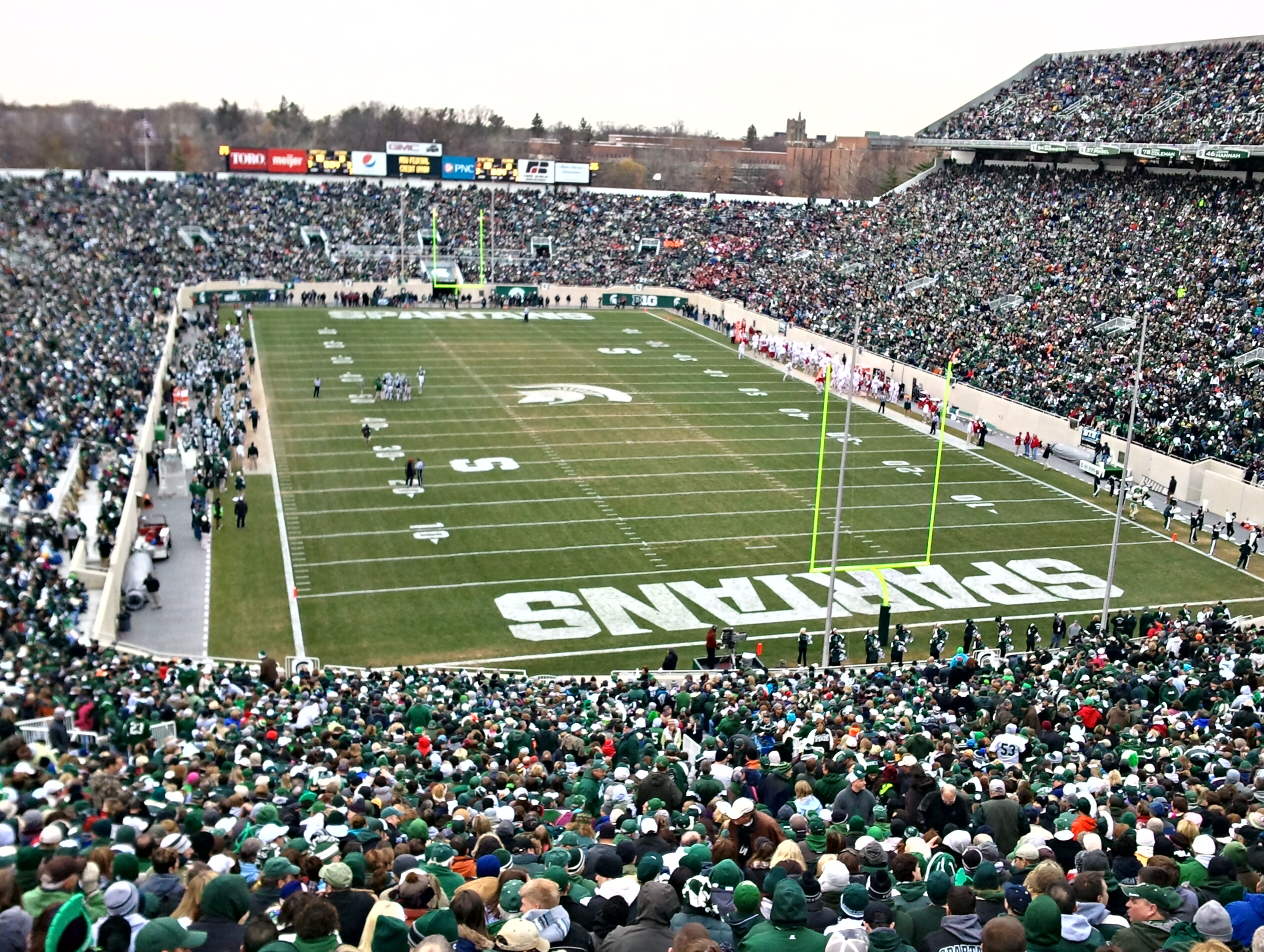
The home of the Michigan State Spartans, Spartan Stadium is a beloved venue that combines modern amenities with rich history. Opened in 1923, it has grown to accommodate over 75,000 fans. The stadium is known for its fierce game-day atmosphere and traditions like the "Spartan Walk." Its lush green field and dedicated fans make it a cornerstone of Midwest college football. Spartan Stadium is more than just a football arena; it’s a gathering place for the Michigan State community. On game days, fans line the streets for the Spartan Walk, cheering as the team makes its way to the stadium. The atmosphere inside is electric, with the fight song "Victory for MSU" echoing through the stands. Over the decades, the stadium has witnessed thrilling victories and unforgettable moments, solidifying its place as a cherished institution.
7. Kinnick Stadium – Iowa City, Iowa
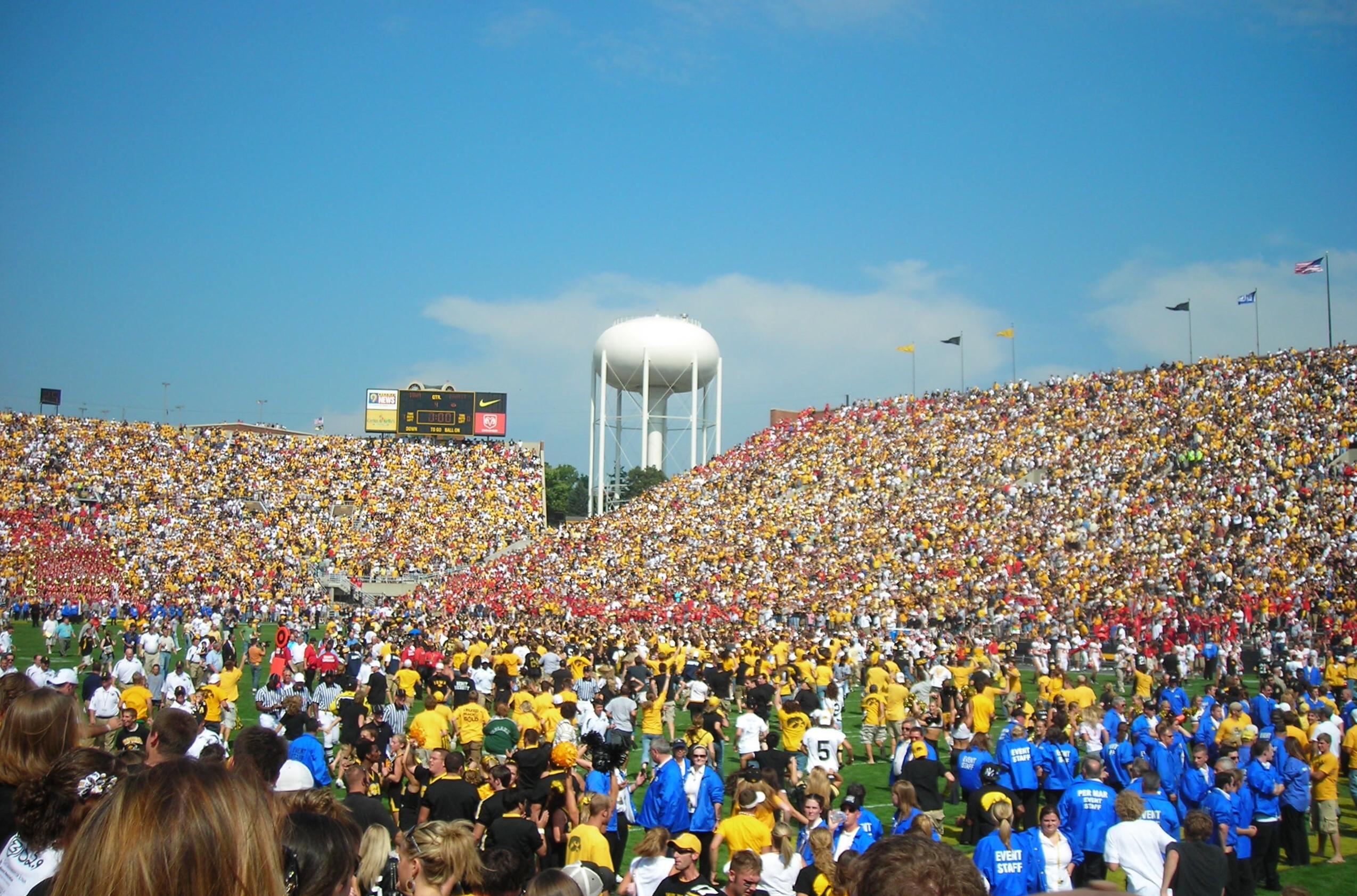
Kinnick Stadium, named after Iowa’s only Heisman Trophy winner, Nile Kinnick, is a jewel of college football in the Midwest. Opened in 1929, it seats over 69,000 fans and is known for its intimate design, bringing spectators closer to the action. The "Hawkeye Wave," where fans and players wave to the children at the nearby University of Iowa Stead Family Children's Hospital, is one of the most heartwarming traditions in sports. On Saturdays, the stadium is alive with the sounds of the Iowa Marching Band and the chants of "Go Hawks!" The blend of tradition and community pride makes every game at Kinnick a memorable experience. Its historic significance and deeply rooted traditions have made it a symbol of hope, resilience, and unity for Hawkeye fans.
8. Ryan Field – Evanston, Illinois
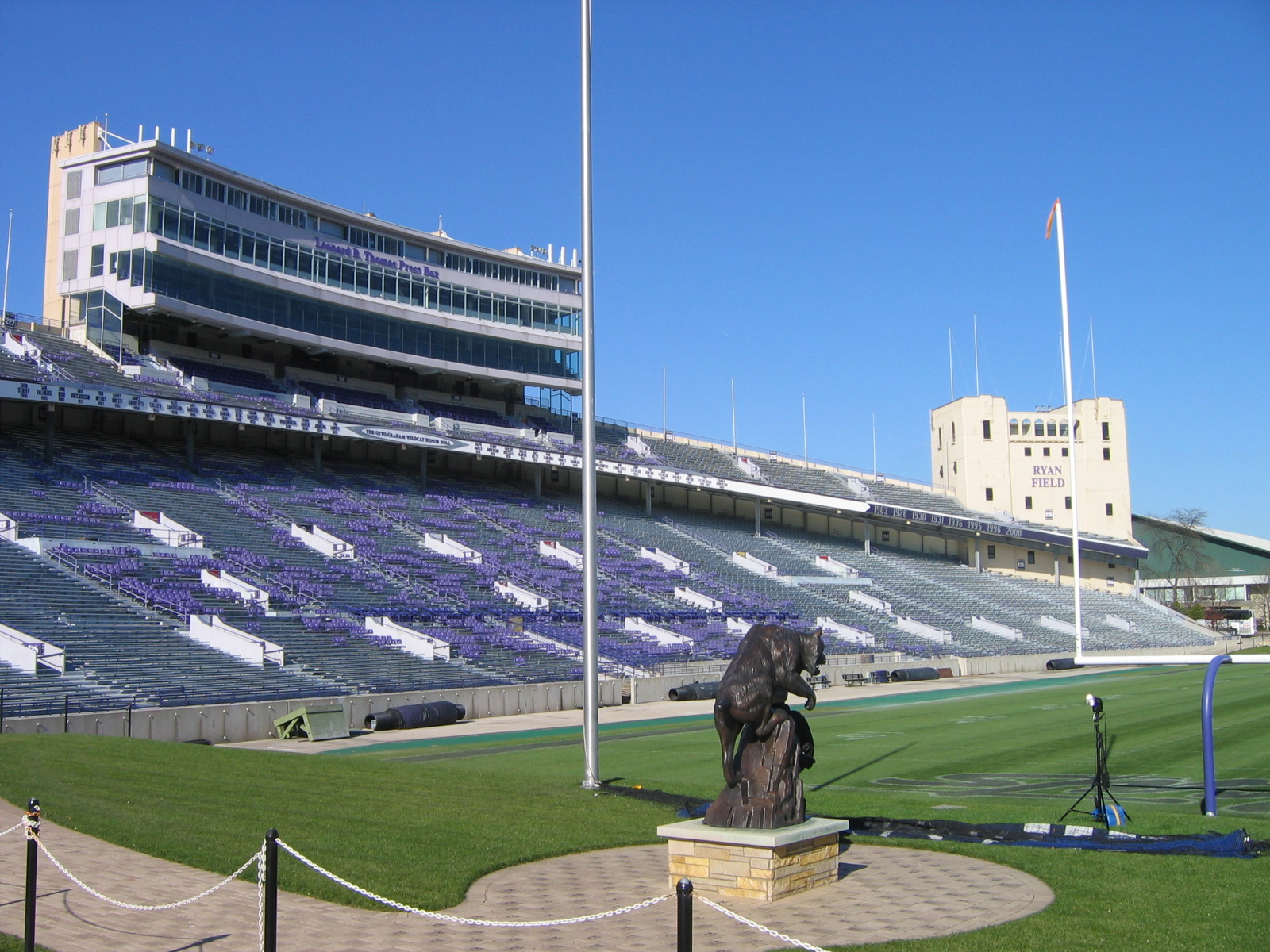
Ryan Field, located on the picturesque campus of Northwestern University, offers a unique blend of charm and tradition. Opened in 1926, it seats around 47,000 fans and is the smallest stadium in the Big Ten Conference, creating an intimate and personal game-day experience. The stadium’s ivy-clad walls and proximity to Lake Michigan add to its aesthetic appeal. The Wildcats’ loyal fanbase brings energy to Ryan Field, making every game a spirited affair. From the Wildcat Dash to the strains of "Go U Northwestern," the traditions at Ryan Field celebrate the university's athletic and academic excellence. The stadium has witnessed several historic upsets and is a beloved venue for students, alumni, and Evanston residents.
9. Ross-Ade Stadium – West Lafayette, Indiana
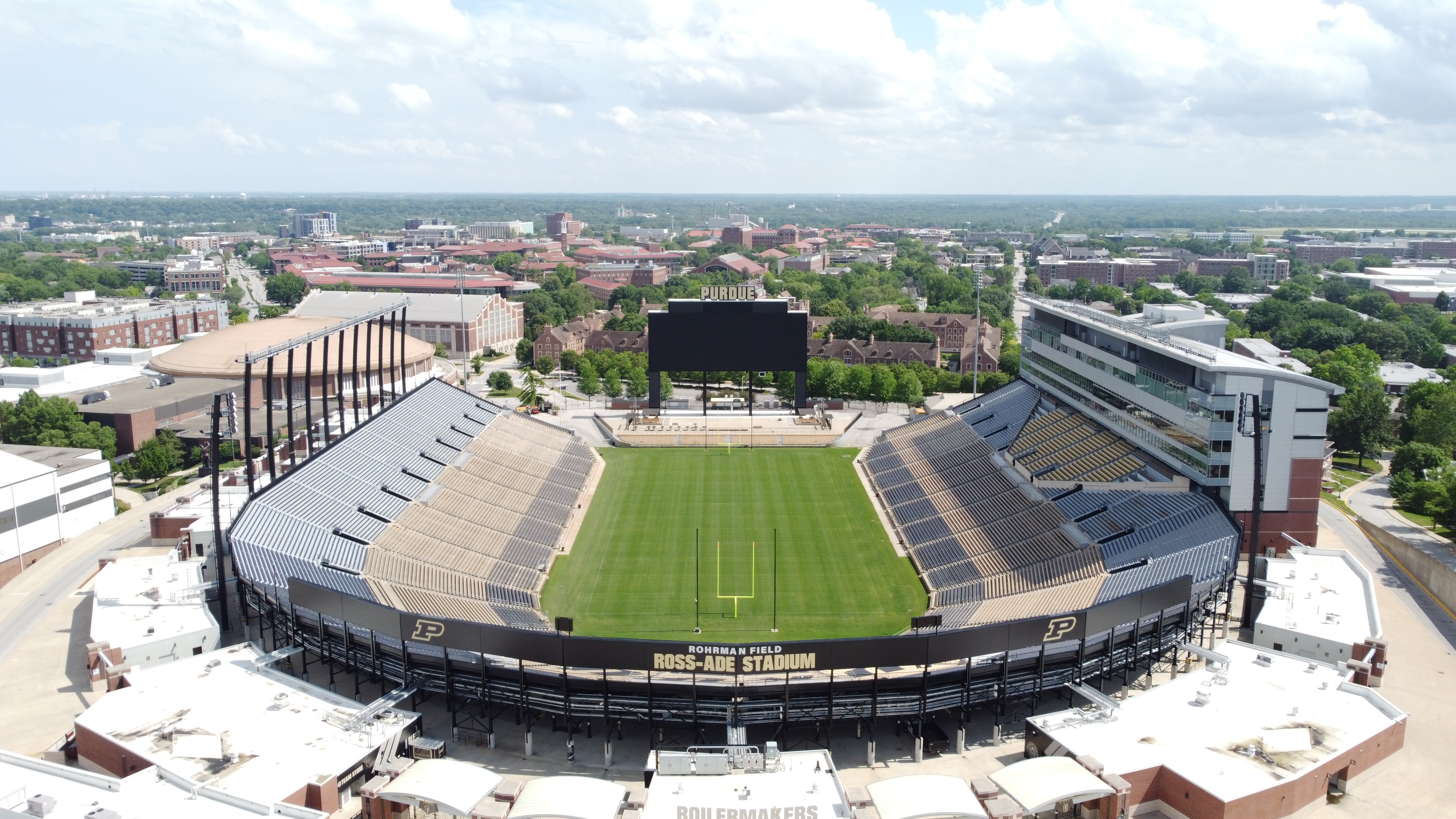
Ross-Ade Stadium, the home of Purdue Boilermakers football, is a cornerstone of the university’s athletic culture. Opened in 1924 with a capacity of over 57,000, it is known for its classic architecture and its location in the heart of campus. The stadium has undergone significant upgrades, ensuring a modern experience for fans while preserving its historic charm. Game days at Ross-Ade are marked by the thunderous sound of the "All-American Marching Band" and the iconic Boilermaker Special locomotive. The camaraderie of the Purdue community is palpable, with traditions like the "Hammer Down" chant energizing the crowd. Ross-Ade Stadium stands as a testament to Purdue’s enduring spirit and commitment to excellence in athletics and beyond.
10. Memorial Stadium – Bloomington, Indiana
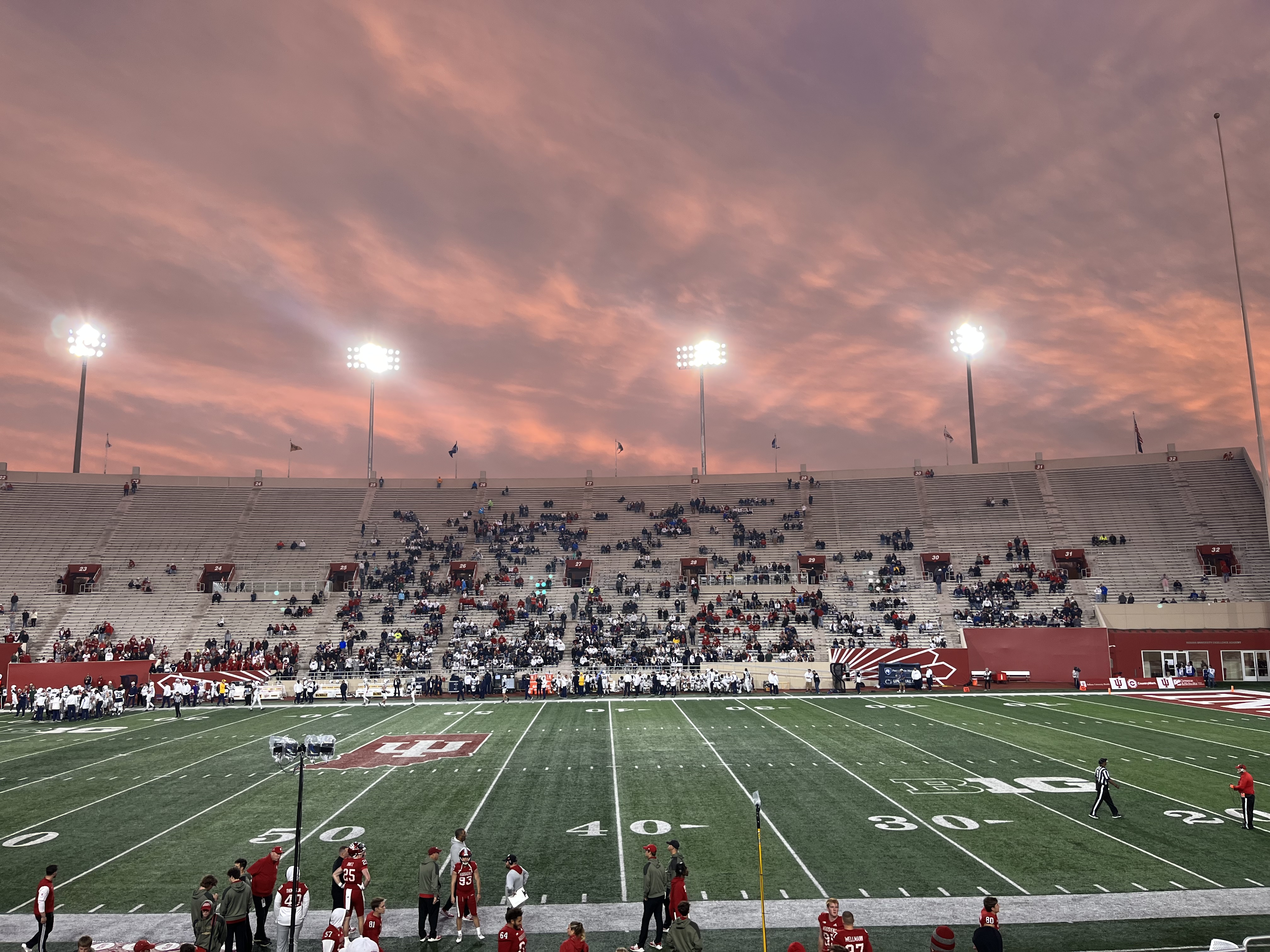
Nestled in the scenic campus of Indiana University, Memorial Stadium, also known as "The Rock," is a venue rich in tradition and Hoosier pride. Opened in 1960, the stadium can accommodate over 52,000 fans and is characterized by its unique limestone façade, a nod to Indiana’s geological heritage. The stadium’s atmosphere is bolstered by the passionate Hoosier fanbase and the rousing tunes of the Marching Hundred. Game days at Memorial Stadium are a celebration of community and school spirit. The pre-game tailgates, the iconic Hoosier chants, and the unveiling of the "Victory Flag" after a win are moments that define the experience. Despite its relatively young history compared to other Midwest stadiums, Memorial Stadium has carved its place as a symbol of perseverance and pride for Indiana fans.
11. Faurot Field – Columbia, Missouri
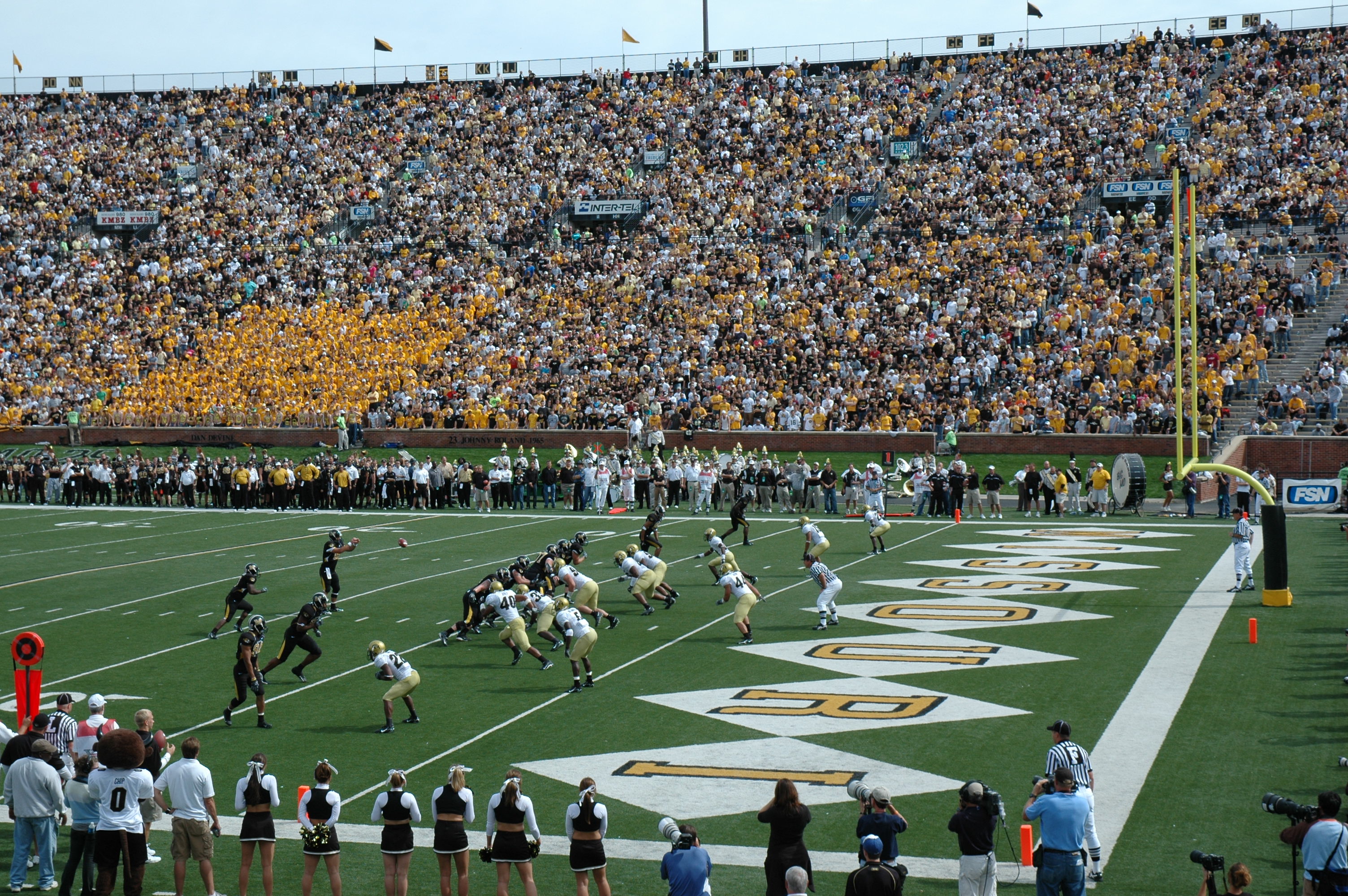
Faurot Field, home of the Missouri Tigers, stands as a cherished emblem of collegiate football in the Midwest. Since its opening in 1926, this iconic stadium has been a cornerstone of the University of Missouri’s rich athletic tradition. With a seating capacity exceeding 61,000, it offers an electric atmosphere on game days, amplified by the sea of black and gold-clad fans who pour into its stands. One of the stadium’s most distinguishing features is the giant “M” made of whitewashed rocks on the hillside, a tribute to the university and a landmark that has become synonymous with Mizzou pride. Game days at Faurot Field are steeped in tradition, from the Tiger Walk—where fans line the streets to cheer on the team as they arrive at the stadium—to the raucous cheers that echo through the stands. Beyond football, the stadium serves as a gathering place for the Columbia community, hosting events that strengthen the bond between the university and its supporters. Over the decades, Faurot Field has seen historic games, celebrated victories, and unforgettable moments, solidifying its place as one of the Midwest’s most beloved sports venues.
12. TCF Bank Stadium – Minneapolis, Minnesota
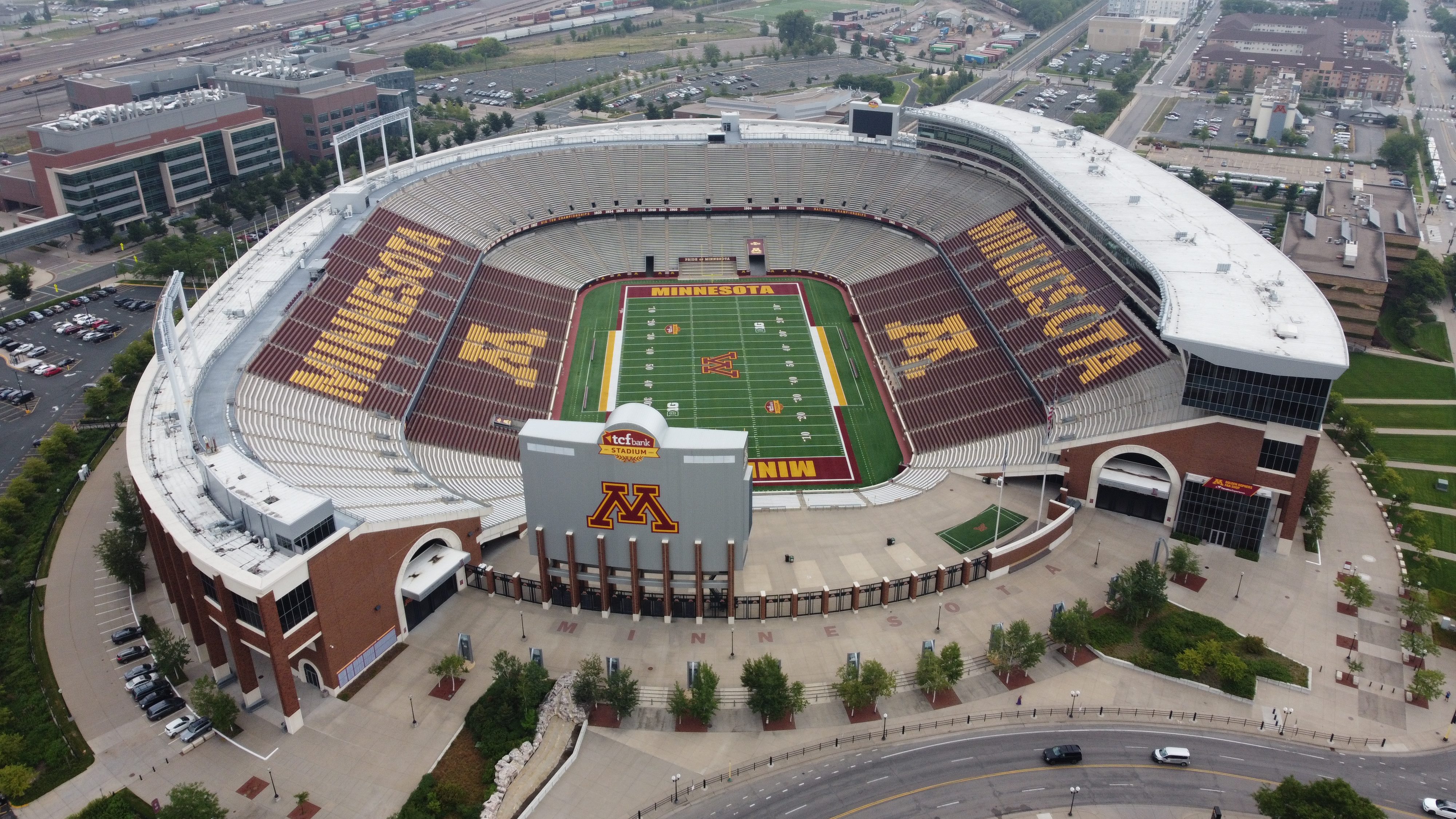
Now known as Huntington Bank Stadium, this state-of-the-art venue in Minneapolis has redefined the game-day experience for the Minnesota Golden Gophers since its debut in 2009. With a seating capacity of 50,805, the stadium combines modern amenities with thoughtful nods to Minnesota’s rich history and natural beauty. Its open-air design not only provides a traditional football experience but also showcases the state’s changing seasons, offering breathtaking views of the Minneapolis skyline. Huntington Bank Stadium is a testament to sustainability and innovation, earning accolades for its eco-friendly design and commitment to reducing its environmental footprint. The stadium features locally sourced materials and energy-efficient systems, reflecting the university’s dedication to environmental stewardship. On game days, the atmosphere comes alive with the Gopher fan base filling the stands, their maroon and gold spirit creating an unforgettable spectacle. Beyond football, the venue hosts concerts, community events, and even outdoor hockey games, making it a versatile and integral part of Minneapolis culture.
13. Jack Trice Stadium – Ames, Iowa
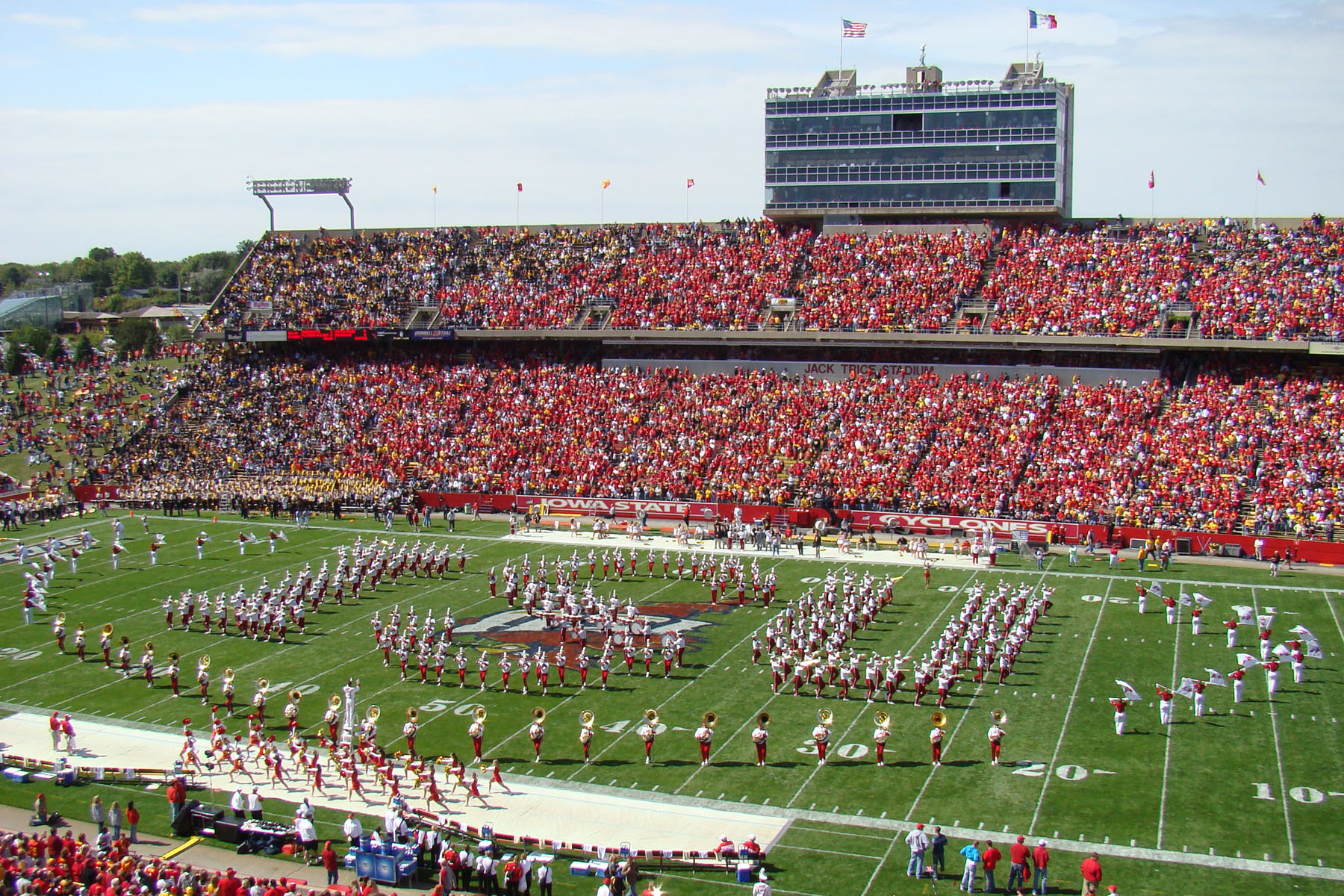
Jack Trice Stadium holds a unique and powerful place in college football history as the only FBS stadium named in honor of an African American athlete. Opened in 1975, the stadium commemorates Jack Trice, Iowa State University’s first Black football player, whose legacy of courage and perseverance continues to inspire generations. With a seating capacity of over 61,000, the stadium is a hub of Cyclone pride, drawing passionate fans who fill the stands to cheer on their team. The significance of Jack Trice’s story adds a layer of meaning to every game played here. His commitment to equality and excellence resonates with the Cyclone community, making the stadium not just a venue but a symbol of progress and unity. Game days are marked by the energy of loyal fans, elaborate tailgating traditions, and the thunderous roar of the crowd. Beyond football, the stadium serves as a beacon of community and a reminder of the enduring impact of Trice’s legacy on Iowa State and the broader world of collegiate athletics.
14. Memorial Stadium – Champaign, Illinois
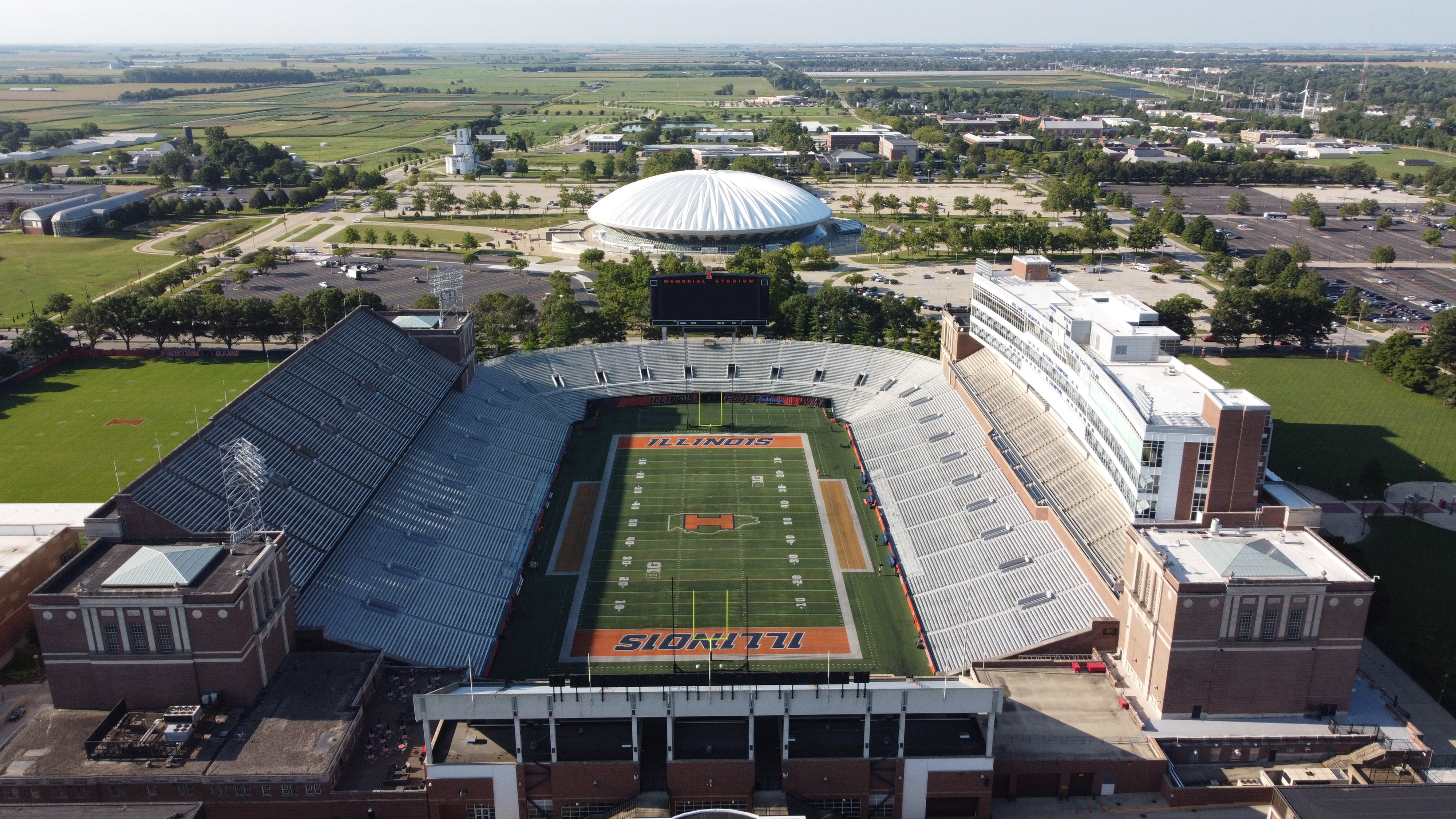
Memorial Stadium at the University of Illinois is a historic tribute to the state’s World War I veterans, combining athletic excellence with solemn remembrance. Opened in 1923, this storied venue has a seating capacity of 60,670 and features iconic columns engraved with the names of soldiers who gave their lives in service. The architecture seamlessly blends traditional and modern elements, creating an atmosphere that honors the past while celebrating the present. For Fighting Illini fans, Memorial Stadium is more than just a place to watch football—it is a sanctuary of pride and tradition. The marching band’s performances, the cheers of the crowd, and the unforgettable moments on the field create an electric atmosphere on game days. Beyond football, the stadium is a community gathering place, hosting concerts, graduation ceremonies, and other significant events. Its legacy as a symbol of honor and resilience continues to inspire fans and alumni, making it a revered landmark in the Midwest.
15. Memorial Stadium – Manhattan, Kansas
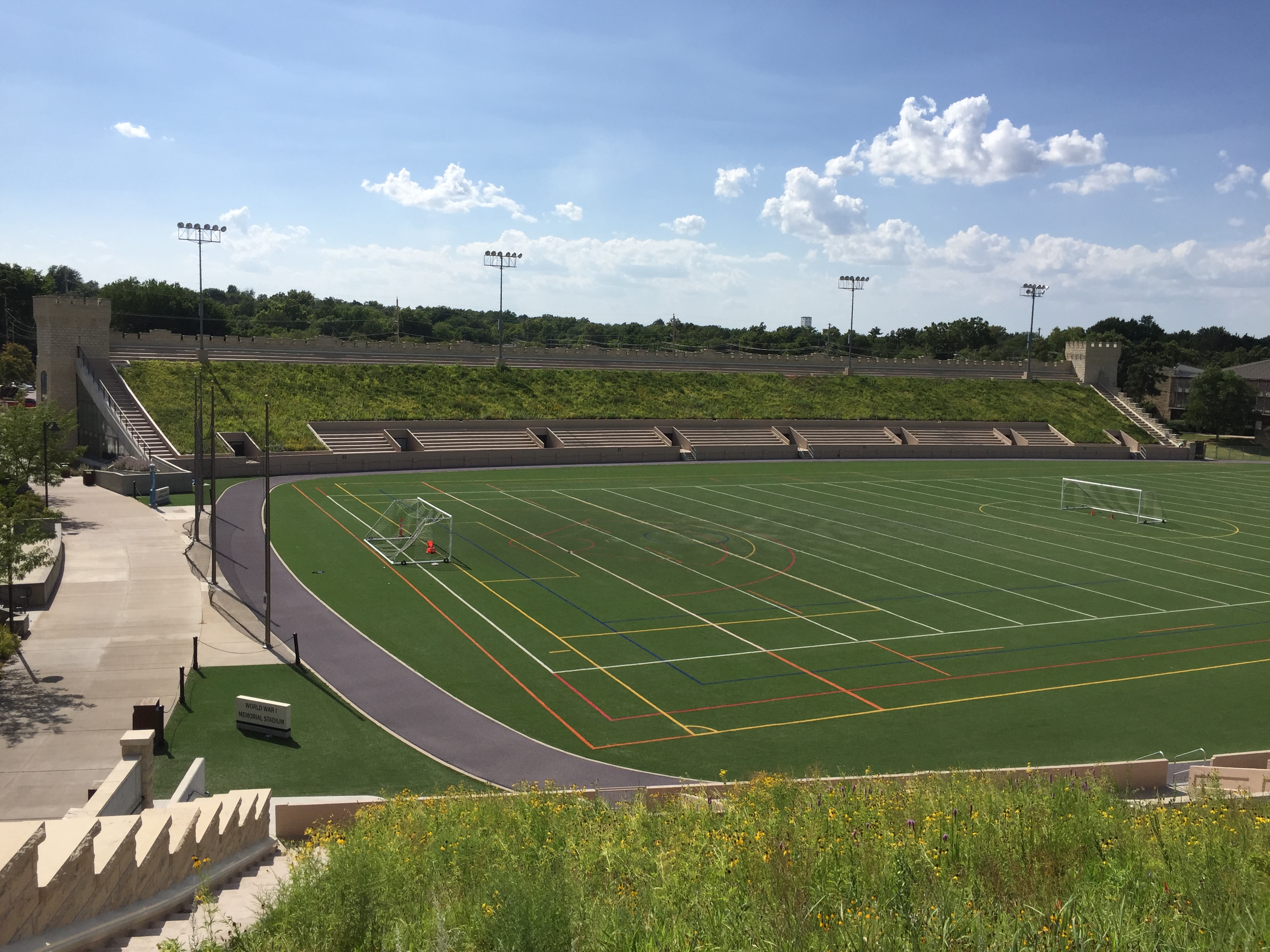
Nicknamed "The Little Apple," Manhattan, Kansas, is home to one of the region’s most cherished landmarks: Kansas State University’s Memorial Stadium. Opened in 1922, the stadium originally served as the home of the Wildcats football team. Now named the World War I Memorial Stadium, it was built and named in tribute to students of Kansas State who died in WWI. The stadium has since transitioned primarily to track and field events, yet it remains a symbol of the university’s athletic history and a testament to its enduring spirit. Nestled within the picturesque Kansas State campus, the stadium exudes charm and historical significance. Its connection to the university’s earliest athletic achievements makes it a treasured site for students, alumni, and local residents. Memorial Stadium also serves as a venue for community events, reinforcing its role as a hub of activity in Manhattan. Though its primary purpose has evolved, its legacy as a cornerstone of Kansas State’s athletic tradition continues to shine brightly.
16. Dyche Stadium – Chicago, Illinois
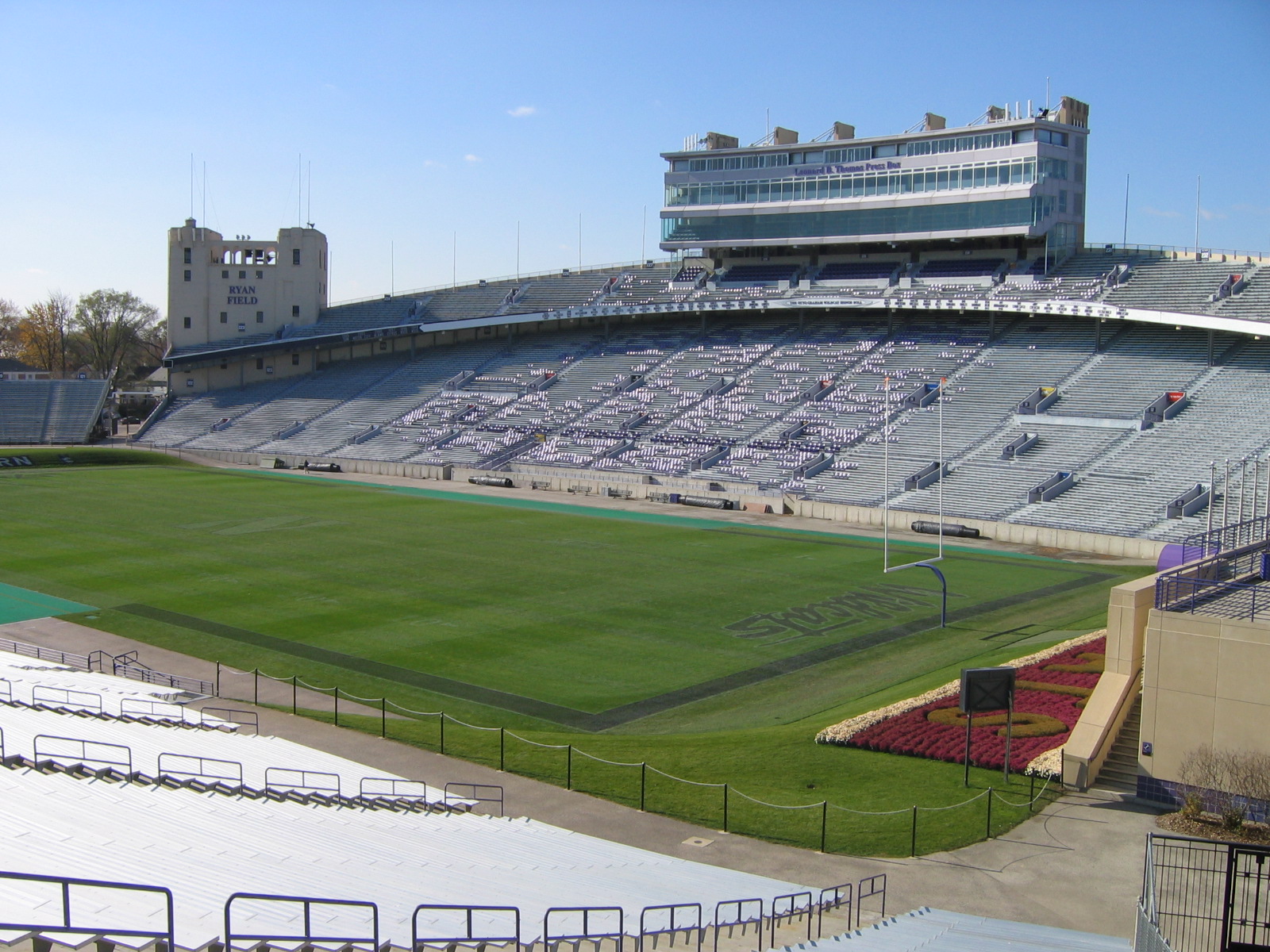
Known today as Ryan Field, Dyche Stadium is a historic gem that has been the pride of Northwestern University since its opening in 1926. Nestled in the charming suburb of Evanston, the stadium’s ivy-covered walls and intimate design make it one of the most picturesque venues in the Big Ten. With a seating capacity of approximately 47,000, Ryan Field offers fans an up-close and personal view of the action, creating an atmosphere that feels both nostalgic and electric. Over the decades, the stadium has been the site of countless memorable moments, from thrilling victories to iconic rivalry games. Its rich history and classic design evoke a sense of timelessness, drawing fans who appreciate the charm of old-school college football. Beyond the gridiron, Ryan Field hosts concerts and community events, solidifying its place as a cultural landmark. As Northwestern continues to grow its athletic program, the stadium remains a cherished symbol of the university’s traditions and achievements.
17. Arrowhead Stadium – Kansas City, Missouri
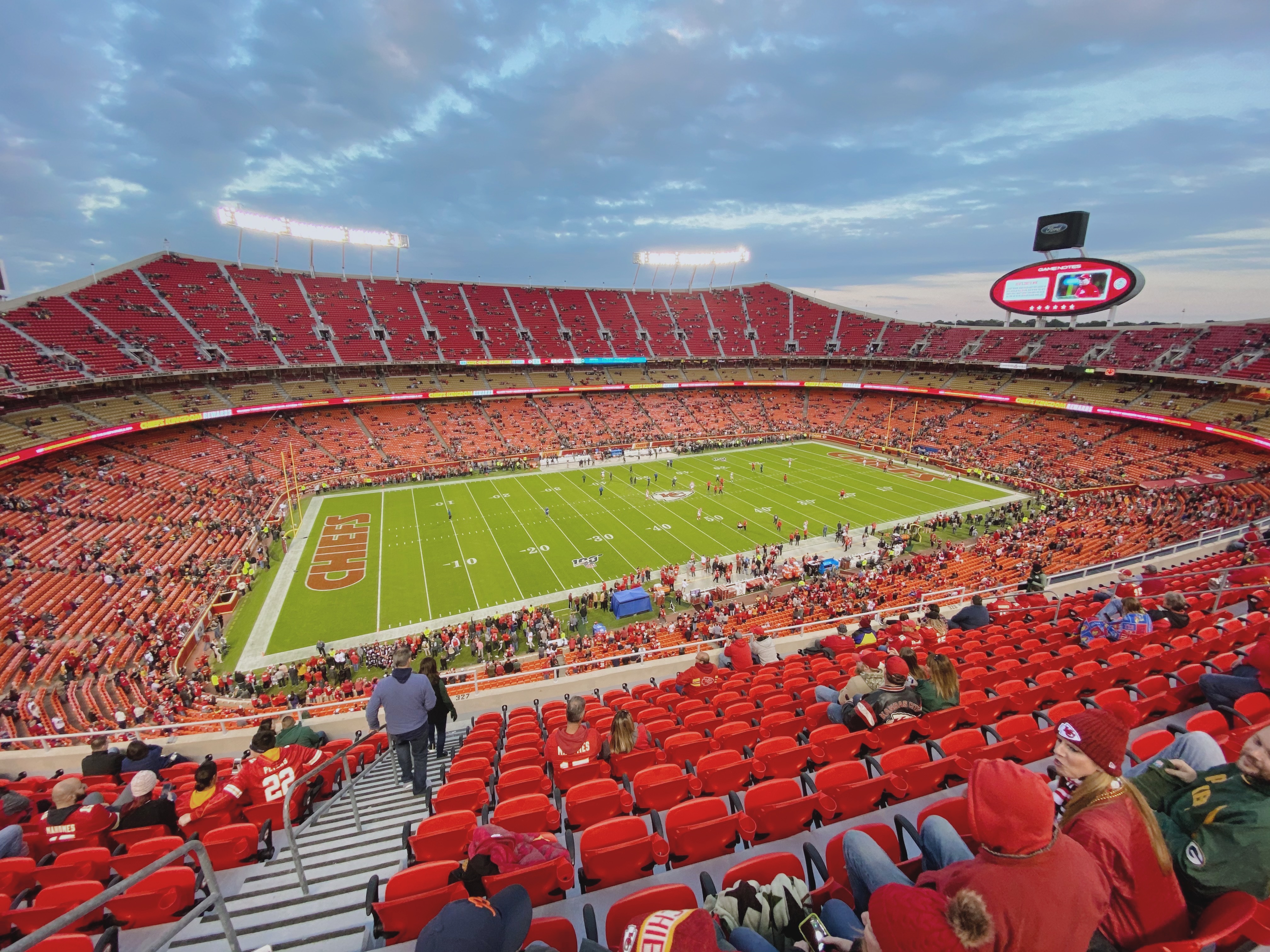
While Arrowhead Stadium is best known as the home of the NFL’s Kansas City Chiefs, it has also earned a reputation as a premier venue for college football. With a seating capacity of 76,416 and a record-breaking reputation for crowd noise, Arrowhead provides an electrifying atmosphere that rivals any collegiate venue. Its bold red seats and state-of-the-art amenities make it a standout destination for major college matchups, including bowl games and rivalry clashes. The stadium’s versatility is one of its greatest strengths, hosting events that range from high-stakes football games to world-class concerts. For college football fans, Arrowhead offers an unparalleled experience, combining the intensity of professional sports with the traditions of the college game. Its location in the heart of the Midwest and its iconic design make it a favorite among fans and players alike. Whether cheering for the Chiefs or witnessing a historic college showdown, visitors to Arrowhead are guaranteed an unforgettable experience.
Celebrating Midwest Stadiums: A Legacy of Pride and Passion
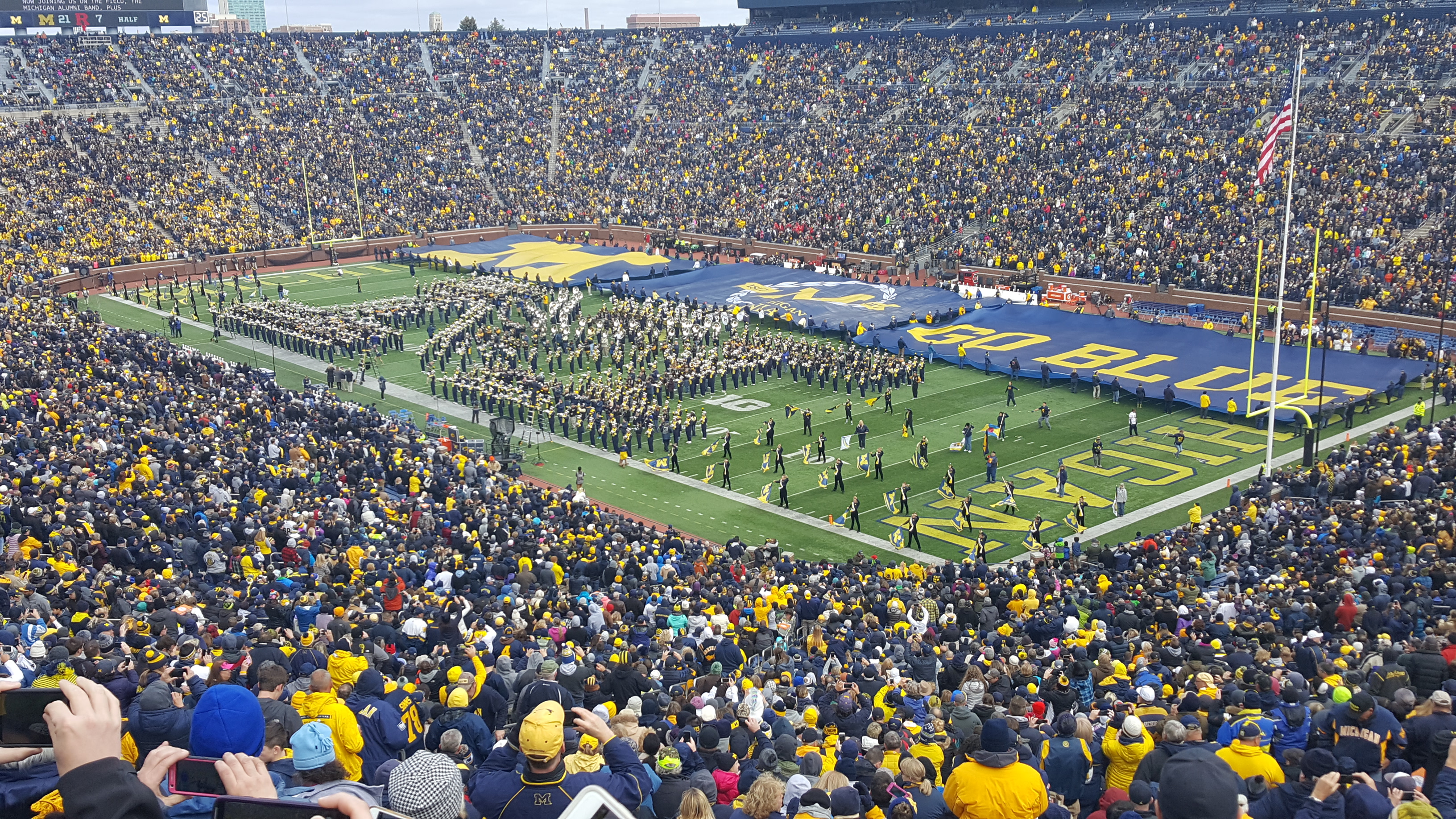
The iconic stadiums of the Midwest are more than just venues—they are living monuments to tradition, community, and excellence. Each of these 17 stadiums holds a unique place in the hearts of fans, athletes, and alumni, serving as sites of unforgettable moments and enduring pride. From the architectural splendor of Ryan Field to the storied legacy of Jack Trice Stadium, these arenas are symbols of the Midwest’s deep love for sports and its unwavering commitment to unity and celebration. As we honor these legendary venues, we celebrate the role they play in shaping the culture and spirit of the heartland, ensuring their legacy continues to inspire for generations to come.








